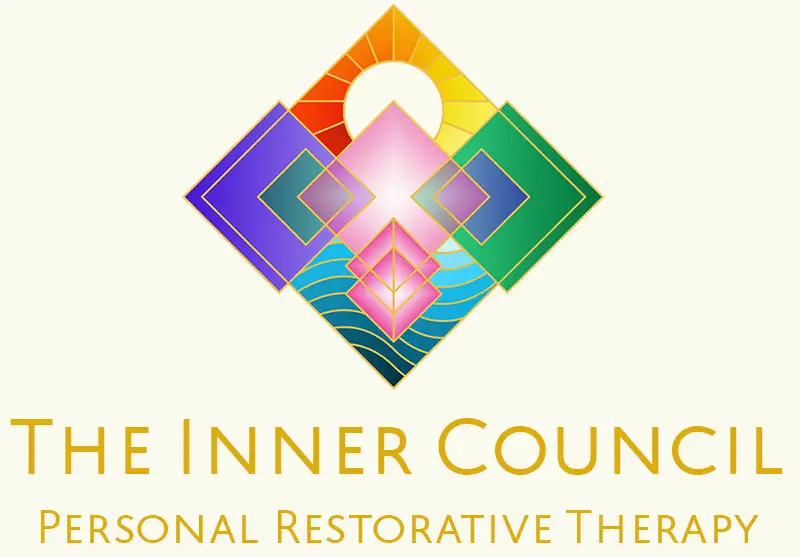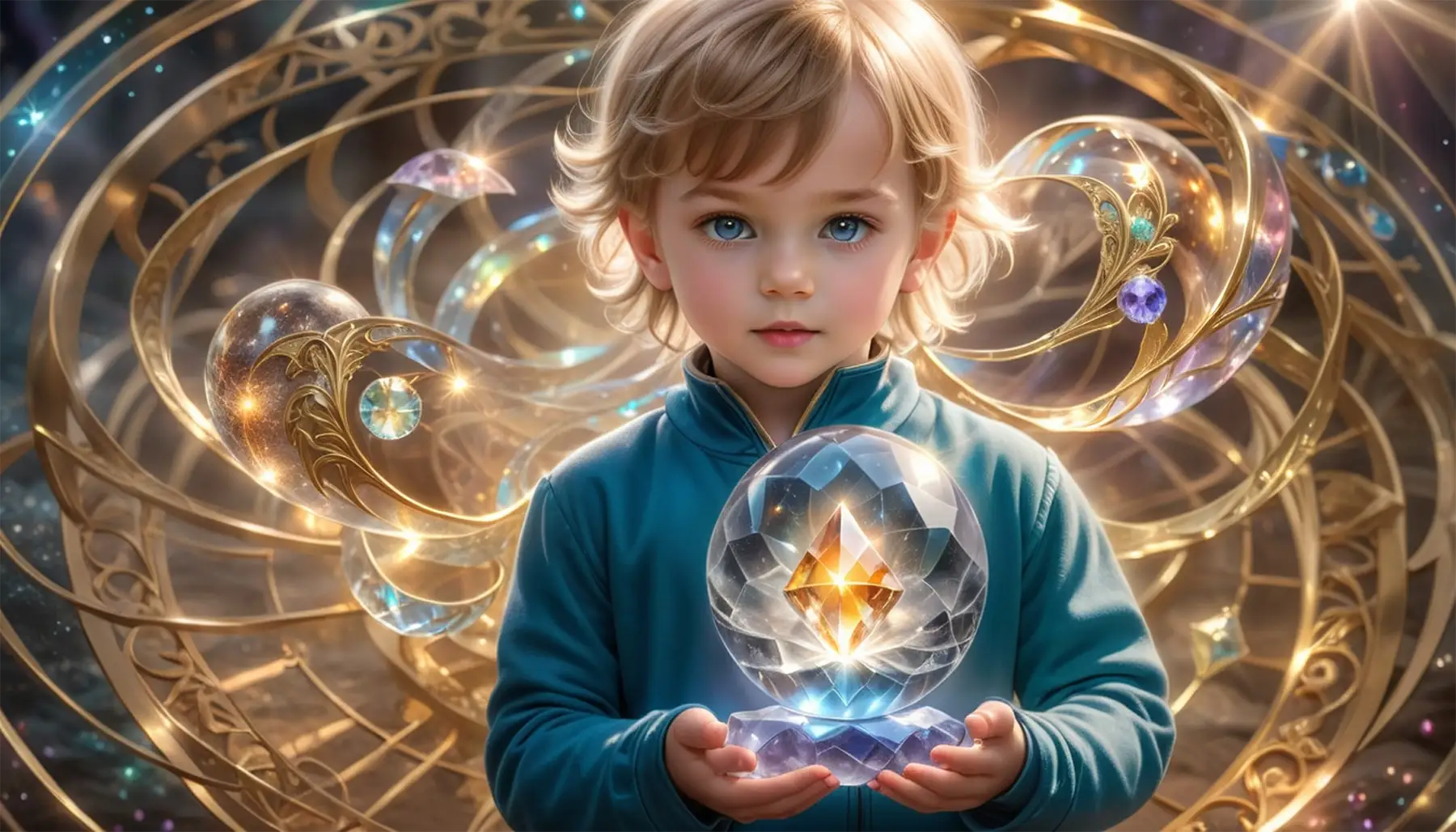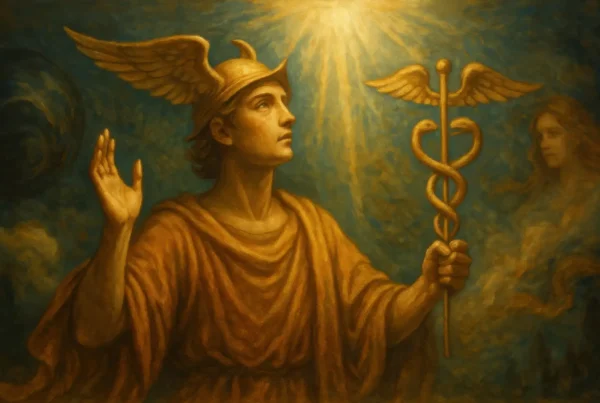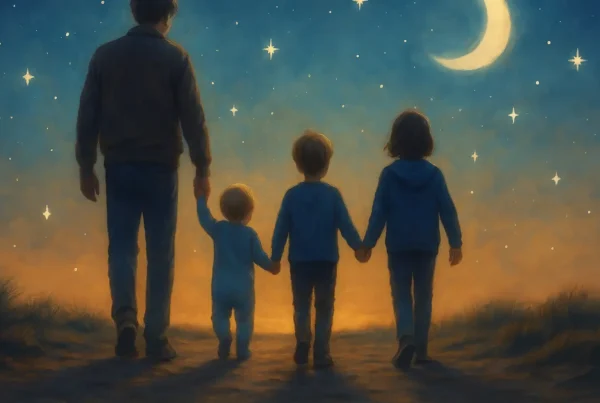BOOK YOUR WORKSHOP TODAY
All posts published here are presented as casual conversation pieces to provoke thought in some direction or another, they do not necessarily represent fixed opinions of the Inner Council, as our work exists beyond the spectrum of bound statement and singular clause.
Is the Inner Child the Philosophers’ Stone?
The first documentation of Lapis Philosophorum or the Philosophers’ Stone in Western Culture was discussed around 300 AD in a compendium of alchemical writings, however there are statements that place the idea of the stone back to Adam who acquired the knowledge of the stone directly from God, “that which is invoked”. Synonymously, there are analogies in Arabic, Buddhist and Hindu texts which describe quite similar properties to that of the Lapis Philosophorum that we read from the alchemist’s cookbooks.
At the core of these common explanations is a white stone (calculus albus) or bright luminous pearl of everlasting incorruptibility that grants immortal divinity to man. There were also mediaeval allegories in which Christ was adopted for the lapis (the son or Inner Child of god?), and Christ and the Stone were one and the same from the writings of Christian mystics.
The Alchemical Texts
There are notes from ninth century alchemical texts quoting from the Alexandrian treatise of Krates, where it is said that a perfect knowledge of the soul enables the adept to understand the many different names which the Philosophers have given to the arcane substance. We see again in the “Liber quartorum” from the Sabians, the philosophic school which flourished in Bagdad till the eleventh century that there must be self-observation in the work as well as of synchronistic events in due time. Indicating a chronological effort of introspection.
A 16th century document, The Rosarium philosophorum (the Rosary of the Philosophers), stated that the way to make the stone was Rounding the triangle into a circle. The methods given were: Out of man and woman make a round circle and extract the quadrangle from this and from the quadrangle the triangle, make a round circle and you shall have the philosophers stone. Here we have a hermetic trinity and a process closely related to Jung’s individuation. The alchemical marriage between the sun and the moon, or as Jung preferred, uniting with the anima/animus. After we’ve stripped the flesh from our own parents, the perfect divine child is an alchemical product of the perfect masculine and feminine that remains. The circling can be seen as a transformation from larva to butterfly, into the hermaphroditic Christ consciousness.
Turn inward for your voyage, for all your arts. You will not find the stone in foreign parts. – Angelus Silesius
The Twelve Keys of Basil Valentine published in 1599 gives us a very clear idea of the thinking of a Benedictine monk from the arduous study of alchemic manuals who demonstrates quite clearly, that the stone is made from masculine and feminine counterparts held in one by marriage, such as the anima/animus or idea of the twin flame out of which comes a third as the product of propagation through seed. A divine child.
But our Stone, as it has been bequeathed to me by the Ancients, is derived from two things, and one thing, in which is concealed a third thing. This is the purest truth, and a most faithful saying. For male and female have from of old been regarded as one body, not from any external or visible consideration, but on account of the ardour of that mutual love which naturally draws them together into one; and as the male and female seed jointly represent the principle of propagation, so also the sperm of the matter out of which our Stone is made can be sown and increased.
The Alchemists often spoke of the elusive mercury of the Philosophers—a living essence without which no transmutation could occur. Ethan Allen Hitchcock, in Remarks upon Alchemy and the Alchemists (1857), observed that this mercury is not a material reagent at all, but a purified conscience awakened in the awareness of the divine. The true difficulty of the alchemical process, he said, lies in kindling this inner awareness in humankind—to establish within the heart a steadfast commitment to right action and integrity. Once that has been achieved, he adds, the rest of the work becomes almost effortless—“child’s play.” What the old masters called “mercury twice-born” may therefore be understood as the quickening of the soul through moral clarity, a state so simple and innocent that only the childlike heart can sustain it.
The Child Archetype
Jung wrote The Psychology of the Child Archetype in 1940 in which he describes the child motif as more than just a ‘vestigial memory of one’s own childhood’. The child represents the synthesis of the contents of the consciousness and the unconscious and is the symbol of the unification of opposites and the realisation of the self and heralds the potential future and anticipates a nascent state of consciousness and the resulting transformation of personality.
The divine symbol of the child-god and the semi-divine symbol of the child-hero give an essence to the potential synthesis within the motifs as they are, by nature, symbols of transformation towards unity. Jung stated that ‘This motif represents not only something that existed in the distant past but also something that exists now.’ and ‘the motif is a system functioning in the present whose purpose is to compensate or correct, in a meaningful manner, the inevitable one-sidednesses and extravagances of the conscious mind’ and raise them to ‘the highest pitch of clarity’.
Jung warned that if we repress the collective child archetype in totality then our unconscious content will overwhelm the conscious aim and inhibit, falsify and even destroy its reality. This is where we see our progressivism outrunning valid critique, constantly piling up a debt which is ‘paid off from time to time in the form of hideous catastrophes’.
As the child paves the way for a future change of personality, it is therefore a symbol which unites the opposites, a mediator, bringer of healing, one who makes whole. – Carl Jung
The Golden Child in Alchemical Symbolism
Throughout the long history of alchemy, from Alexandria to medieval Europe and beyond, the goal of transmuting base metals into gold was never only a material pursuit. The gold of the sages was a symbol of incorruptibility, the soul restored to its original, radiant state. Across the great traditions, this perfected essence is portrayed as a child, the divine offspring born from the union of opposites, the innocence reclaimed after the long night of division.
In The Rosarium Philosophorum, the “child of the philosophers” arises from the marriage of the sun and moon, a crowned androgynous figure who represents the reconciled psyche. Likewise, the Aurora Consurgens declares that “the gold of the wise is innocence regained,” echoing the Gospel’s invitation to become as little children to enter the kingdom of heaven. To the alchemists, this return to childlike purity was not regression but fulfilment, the moment when the soul, freed from corruption and pretense, stands again in its natural light.
Earlier still, Zosimos of Panopolis described a vision in which he himself was dissolved and reborn within the vessel, his “inner man” emerging as spirit. In this rebirth, we see the early image of the divine child — the immortal consciousness born through sacrifice and transformation. The Taoist masters spoke in parallel language: “When one returns to the root, one becomes an infant. This is the Golden Elixir.” The Taoist infant and the Hermetic child of light describe the same alchemical condition, a state of unity where opposites are reconciled and simplicity is restored.
Paracelsus, following this lineage, wrote that “He who finds this child finds all.” For him, the Philosophers’ Stone was not merely a product of chemistry, but the birth of divine awareness within man, the light of nature (lumen naturae) raised in the heart. It is this clear, incorruptible, and spontaneous childlike consciousness that performs the true transmutation: leaden awareness into golden being.
The gold, then, is not forged in a furnace, but remembered in the soul. It is the living innocence of the Inner Child, the philosophical child, who carries within them the eternal properties of the Stone: purity, wholeness, and light uncorrupted by time. Inner Child work can unlock this gold within the revelation of the divine masculine and feminine within the essence of your parents’ union.
The Philosophical Question
One can identify that in general philosophical problems are solved through an insight into the workings of our language, and are resolved, not through the contribution of new knowledge, rather through the arrangement of things long familiar. Thus it appears that the stone’s origin began purely as a spiritually based concept of subjective attainment through meditation. Identified in some cases as divine purity represented by a light that was so high in vibration that it took on a more physical form—something solid and tangible such as a stone. Later on, stories of an actual base ingredient that purified all to gold became the motivation as we drifted out of the metaphysical and into the alchemic physical.
Maggie Hyde mentions in her works on Jung ‘It is likely that the alchemist’s aim was not to produce real material gold but “philosophic” gold. They were concerned not only with the transformation of inanimate matter but with their own spiritual transformation.’
Alexander Shulgin in his The Nature of Drugs wrote: What were the alchemists looking for? It’s easy to say they were looking for gold and wanted to transmute lead to gold. This is what was said, but this was not really what was going on. The transmutation was wanted, but it was transmutation of themselves. They wanted to find how they could interact with things and in a sense find whatever would allow them to understand themselves. Perhaps to find eternal life, perhaps to find ways of maintaining their own image past its mortal limit.
- The analogy then is a purification process to identify the most perfect essence of ourselves, unadulterated and pure. A metaphysical concept that rejuvenates the human soul towards immortality.
- Could the purity of the Inner Child be the ticket into the deep subjective realms where realisation allows one to overcome the mortal aspects of physical, biological existence?
- Have the mythical stories told today that have a child as the centrepiece of the hero’s journey been framed this way to attract an audience of children, or is there something more important being portrayed here?
- Were Frodo and Sam the only suitable carriers of the ring’s journey to Mordor as they represent the Inner Child’s purity of heart?
Mythological fantasy
In Michael Ende’s Neverending Story, the hero must successfully pass through three gates. The first gate is guarded by majestic representations of the divine feminine, who witness the self judgement in the weighing of one’s own heart on the scales of justice. A review of true intent, purity of heart and self belief. The second gate is a mirror, where your true outside self, the one known by others, is shown to you. If this image does not intimidate your protagonist, you may enter the mirror and what lies beyond. The third gate ensures that the person entering has achieved mutuality as a spiritual maturity. If you really want to enter, it is impossible, if you know that you must, but are unenthusiastic, you may pass inside to a realm where an elusive poetry will guide you through conversational considerations to test and guide your heart. What we note here is that this whole world and these Oracle gates were only created for one successful passage. After the true and pure child navigates these gates, they are destroyed or appear as though they were destroyed eons ago. Representing again, that there is only one hero at the heart of the journey. It is you.
In Jung’s Archetypes and the Collective Unconscious there is mention of the Invincibility of the child (a child that is born out of the womb of the unconscious) where he states It is a striking paradox in all child myths that the “child” is on the one hand delivered helpless into the power of terrible enemies and in continual danger of extinction, while on the other he possesses powers far exceeding those of ordinary humanity. This is closely related to the psychological fact that though the child may be “insignificant,” unknown, “a mere child,” he is also divine. Jung goes on to compare the qualities of the child-hero in myth to that of the materia prima of alchemy as a substance in process of transmutation attaining a dignity of a “light above all lights” which enjoys everlasting incorruptibility and is therefore a panacea (“bringer of healing”).
And so, the subjective presents a limitless dimension of personal experience and through the cultivation of these realms we are changing the world that we live in and the terms in which we are playing out our lives.
The Answer
The answer of whether the Inner Child is the Philosophers’ Stone depends upon each individual, where interpretation of life does not adhere to the collective consensus. It is a personal path that one will have to walk alone in order to find the elixir of life that is the hero’s reward. Inner Child work is certainly an entrance into this realm and anything is possible if you author yourself to write the subjective journey that lies ahead.
You and your Inner Child are companions and explorers, for without the Inner Child’s purity of heart you will not be able to pass some of the gates that await ahead. These gates are initiations, realisations of responsibility and humility that we pass one by one along our journey of trust into the deep unconscious. Like the journey to Mordor, your spirit allies will not always accompany you, some episodes have to be completed by the Inner Child alone. Prepare well the trust relationship with your Inner Child. Through the Inner Council we shall recruit our archetypal allies and the adventure ahead depends on you.
Below is the dedication in C.S. Lewis’ The Lion, The Witch & The Wardrobe, which may hold a clue.
My Dear Lucy,
I wrote this story for you, but when I began it I had not realized that girls grow quicker than books. As a result you are already too old for fairy tales, and by the time it is printed and bound you will be older still. But some day you will be old enough to start reading fairy tales again. You can then take it down from some upper shelf, dust it, and tell me what you think of it. I shall probably be too deaf to hear, and too old to understand, a word you say, but I shall still be
your affectionate Godfather,
C. S. Lewis
Visit our Inner Child Workshop page to find out more.
Notes
The Rosary of the Philosophers Being the Rosarium Philosophorum – The Philosopher: Make a round circle of the Man and Woman, and draw out of it a quadrangle, and out of the quadrangle a triangle, make a round circle, and thou shalt have the Stone of the Philosophers.
Remarks Upon Alchemy and the Alchemists: Indicating a Method of Discovering the True Nature of Hermetic Philosophy, Ethan Allen Hitchcock
Galatians 3:28 – There is neither Jew nor Gentile, neither slave nor free, nor is there male and female, for you are all one in Christ Jesus.
“The Tao gives birth to the One,
the One gives birth to the Two,
the Two gives birth to the Three,
the Three gives birth to the Ten Thousand Things.”
Lao Tzu [605-531BC]





